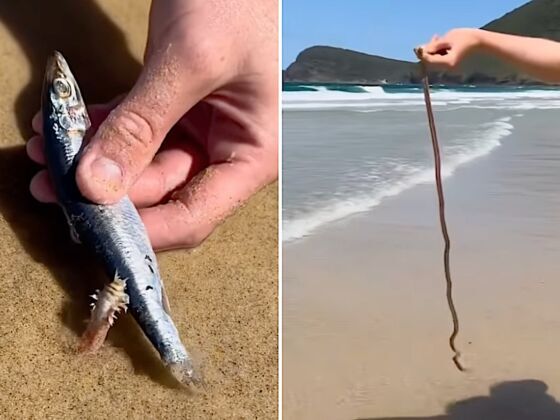The beaches and the shores around the world have many hidden secrets most people don’t know about, and some of those secrets are better kept hidden. Take, for example, the lugworm, an eerie creature that calls popular sandy beaches and other sandy seabeds home. These slimy creatures can be found on sandy beaches during the low water mark and can grow nearly 10 feet long and are about half an inch wide. They remain mostly out of the public view no matter how many sandcastles are built on the show because they don’t come out of the sand unless they are tempted by something to eat.


Everything You Need to Know About the Terrifying 'Sand Worms' Living on Beaches Around the World
The largest lugworms are native to the eastern and southeastern coasts of Australia and are commonly found from Yeppoon to Noarlunga in South Australia. Lungworms are from the Onuphidae family that are known as polychaete worms, which live on the seabed and shore. In Australia, three main species of worms are used commercially and recreationally for bait: Australonuphis teres, Australonuphis mariahirsuta, and the Hirsutonuphis gygis. Each species has different characteristics and is commonly identified by size and look.
Lugworms are omnivores and feed off seaweed and other animal matter that washes on the low water surface. The worms will only come up above the surface of the sand to feed on things like dead fish, dead octopus, and cockles.
Though these worms are buried beneath the sand, another way to spot them is by their worm-like mounds above the sand. Lugworms live in burrows, u-shaped mounds created by lungworms swallowing the sand and essentially leaving behind what they’ve digested, creating wormy-like sand piles along the shoreline.
Although the most concerningly long worms are native to Australia, types of the species can be found on sandy or muddy shores worldwide and are common on the shores of Europe, Africa, and North America. They can be tricky to find, but if you’re on the hunt, they are most easily spotted when the tide goes out — just keep an eye out for a small indention in the sand where the worm has ingested the sand.
The worms are not lethal, but they can bite. These worms are perfect for catching fish like croaker, surfperch, bass, and jack smelt. Fishermen gather this bait by catching the worms by hand. To do so, the fisherman bring something the worms feed off of, like dead fish, the worms pop their heads from beneath the sand and latch on, and the fisherman simply pull the worm out of the sand with their hand or pliers.
Yes the lugworm may look like something out of Ailen, but these creatures aren’t just here to look creepy. The lugworm helps the environment and plays a role in the coastal ecosystem by creating homes to help plants and animals by them burrowing. Their burrowing and feeding also helps aerate the sand and release nutrients back into the ground.